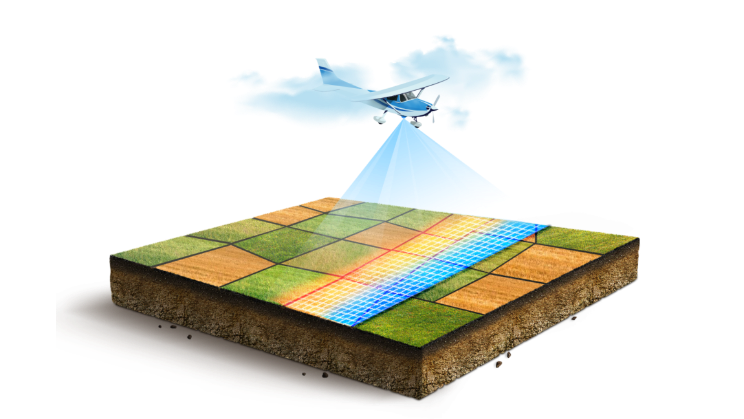Sachi Desai has been a member of Climate LLC’s corporate strategy team for more than two years. He leads the development of platform strategy, forging alliances that bring new innovation to farmers who use FieldView. His expertise in sensors, machine learning and AI spans several industries. Sachi holds a master’s of engineering degree from the Stevens Institute of Technology, and an MBA from New York University.
How Artificial Intelligence Can Help Farmers Scout Crops
Read Time: 3 minutes
August 25, 2020
You can plant with sub-inch accuracy. Self-driving tractors have been around for so long the technology is almost old school. We’re at the point when some “new” technologies are not, in fact, all that new anymore! Another example of this is in scouting. Farmers have had good scouting imagery technology for many years now, and this is an area that is ripe with new opportunity from automation and artificial intelligence. Thanks to innovations from emerging ag-tech startups, the technology is evolving quickly.
See More of Your Fields, in Greater Detail
When dealing with thousands of acres, even an entire team of people cannot adequately cover every field. That’s why some innovators, including FieldView™ platform partner, Intelinair, are making visibility a top priority. They’re creating technology that enables your fields to come to you.

“Thanks to innovations from emerging ag-tech startups, the technology is evolving quickly.”

Image credit: Intelinair
Artificial Intelligence Excels at Monotony
Imagine looking at the same image of a field, week after week, searching for even the slightest variation. An activity that would sound mind-numbing to people is tailor-made for artificial intelligence. Machine learning (a subset of AI) uses algorithms to parse data, learn from it, and make determinations without human intervention. Since machines are built for repetition, machine learning can look pixel-by-pixel and notice even the slightest change in a field image. In the case of scouting innovations like those from Intelinair, field imagery data comes from planes, and is combined with other layers, such as moisture, soil and planting data. The algorithm uses this data to find changes in the field.
“Machine learning uses algorithms to parse data, learn from it, and make determinations without human intervention.”
Artificial Intelligence Can See The Light (Literally)
No doubt, the human eye is remarkable, but it has limitations. For instance, the amount of sunlight a plant reflects can tell us a great deal about the crop's health. High-tech cameras and software can see a much broader spectrum of light reflected by a crop. This is the same principle that informs technology like night-vision. Companies like Intelinair are deploying advanced, highly sensitive cameras, along with powerful software that can see changes the human eye would never detect.
The Future of Crop Scouting: No News is Good News
Intelinair and other innovators may make us rethink the old farming adage that once you see a problem with your crop, it’s too late to change it — because AI will “see” it much earlier than has traditionally been possible. In fact, they’re creating the possibility that you may only need to look at field imagery a few times a season. One day in the future, if you don't receive an alert for a specific field, it will mean everything looks great. With all that's involved in running a modern farming operation, advancements like this will save you some serious time.
“High-tech cameras and software can see a much broader spectrum of light reflected by a crop.”
Software Talking to Software: Everyone Learns
When it comes to data science, more information means better analytics. In my role, I forge relationships with platform partners that can make FieldView work harder for you by giving you easy access to more data about your operation.
We are very selective when it comes to our partners. They must value data privacy as we do, and only use the information they collect to provide more value to farmers. And on top of that, FieldView users are always in control — you select if you want to share your data with a platform partner, and how it’s shared.
“FieldView users are always in control — you select if you want to share your data with a platform partner, and how it’s shared.”
Connecting to the Future
Through partnerships, digital farming can bring you advances such as artificial intelligence in aerial imagery so much faster, since newcomers can leverage existing infrastructure. And there are so many potential applications. Imagine if you could opt to connect your field imagery to your insurance provider so that providing proof of hail damage, for example, would be nearly instantaneous. This is just one of many opportunities where by working together, we can work more efficiently. And really, that's what data science is all about.
If you’d like to learn more about aerial imagery innovation, check out our "Around the Farm" podcast. Episode 25 features Intelinair guests Greg Rose as well as Account Manager Connor Schmidt discussing the latest technology to help you up your scouting game.






